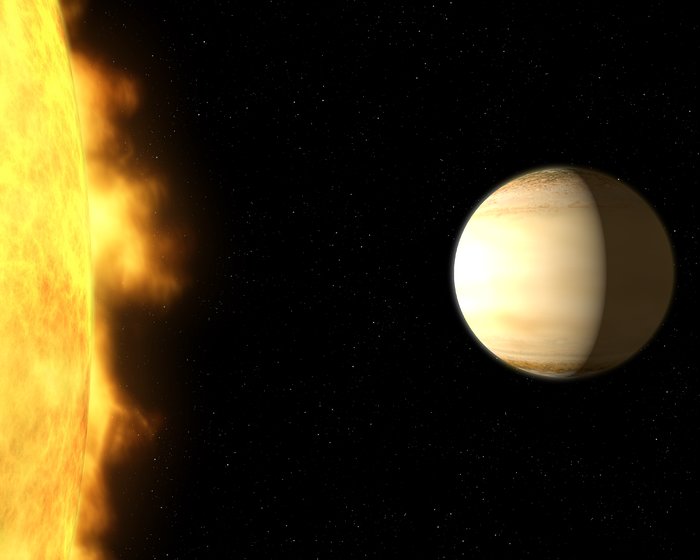The science of exoplanets—worlds beyond our solar system—has thus far focused more on quantity than quality. The considerable distances to most of the several thousand exoplanets catalogued to date, coupled with the limitations of current telescope technology, mean that astronomers know little about these alien worlds’ properties beyond the broad strokes of size, mass, and temperature. An exception to this generality is a hot, Saturn-mass planet designated WASP-39b. In a recent study, new observations of WASP-39b from the Hubble Space Telescope, combined with data from the Spitzer Space Telescope and the ground-based Very Large Telescope, have together painted the most comprehensive portrait yet of an exoplanet’s atmosphere. See also: Atmosphere; Exoplanet; Hubble Space Telescope; Saturn; Spitzer Space Telescope; Telescope; Very Large Telescope

WASP-39b is amenable to such characterization in part because of its relative proximity, located some 700 light-years away from our solar system. The closer an exoplanet, the more light from it—and thus, more information—can reach our telescopes. The atmosphere of WASP-39b in particular lends itself to detailed study. WASP-39b orbits its Sun-like host star in an extremely tight orbit, and the stellar irradiation makes the atmosphere puffy and extended. The final necessary piece of the puzzle to probing WASP-39b is that the world crosses, or transits, the face of its star as seen from Earth. See also: Light; Light-year; Star; Transit (astronomy)
Taking advantage of all these factors, astronomers captured light filtering through WASP-39’s puffy atmosphere during stellar transits. The molecules in the atmosphere absorb and re-emit the light at specific frequencies, creating a telltale molecular fingerprint readable by a technique called spectroscopy. The spectroscopic observations revealed a surprisingly high concentration of water vapor—more than three times Saturn’s equivalent. Plugging the water figures into a model suggests that WASP-39b’s atmosphere contains a greater number of heavier elements than Saturn’s atmosphere as well. See also: Element (chemistry); Molecule; Spectroscopy; Water
This evidence suggests that earlier in its planetary lifetime, WASP-39b was situated much farther away from its star than it is now, in a portion of its solar system where icy, heavy element-rich material would have impacted and enriched its atmosphere. Researchers believe that many hot Saturns such as WASP-39b, as well as their larger cousins, hot Jupiters, underwent these sorts of migrations inward toward their suns, because the searing conditions near a star should prevent gas giants from forming in the first place. Overall, the findings speak to the wild diversity in planetary compositions and histories that astronomers expect to find as more and more worlds receive in-depth examinations similar to that of WASP-39b. See also: Jupiter; Planet; Solar system





